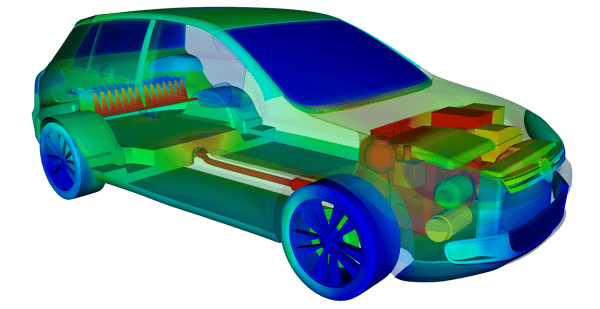
The automotive industry is on the fast track to improving e-mobility—the development of electric-powered drivetrains is predicted to shift vehicle design away from using fossil fuels and carbon gas emissions. Regulatory groups and governments are pushing for the growing electric vehicle movement. Incentives such as priority parking and tax breaks indicate the trend is on the rise and is being taken seriously by consumers and automotive manufacturers. With incentives like these and the exigence of clean energy and fuel costs, why haven’t electric vehicles taken a sweep of all vehicle lineups?
Several technical barriers are preventing electric vehicles from being the majority of transportation on the road, including range, battery performance, and cost.
Increase Electric Vehicle Range
Current battery technology struggles to meet consumers' range and charging time expectations. Traditional combustion engine vehicles today can drive around 400 miles before needing to be refueled. Electric vehicle range is improving—most EVs can travel over 100 miles, with some models reaching ranges of over 300 miles. And while refueling a conventional car takes only minutes, battery models can take 3 to 12 hours to charge. In best cases, some fast-charging models can reach 80% capacity within 30 minutes of charging. These improvements are promising, but the necessary modifications will take significant time and resources to accomplish.

Understand Environments
Electric vehicles also face challenges in extreme temperatures. Batteries are like Goldilocks; they only function optimally in the right environment. The battery's performance will fall short if it is too hot or cold. In cold climates, a battery's performance can decrease by as much as 40%.
Create More Price Points
In most markets, EVs are considered luxury vehicles and can be more costly than traditional cars. But, studies show that electric vehicles may be a better deal in the long run, with accumulated savings on fuel and maintenance. If consumers can swing the initial price tag for an EV, they may see savings. Electric vehicles are also poised to make up more of the market in future years. More models will undoubtedly mean a wider variety of price points to choose from, making purchasing decisions less arduous for prospective buyers. As many OEMs have stated, they will roll out new electric models in the future. As they do, engineers are creating solutions to these challenges for EVs to become a more significant percentage of the market.
Overcome Challenges Using Thermal Simulation
To successfully bring new electric fleets to market, engineers must attempt new approaches to discover solutions to these challenges without blowing budgets and production timelines. Using thermal simulation, they can validate solutions before creating physical prototypes. These thermal validations can then save you from spending unnecessary money down the road.

Running a large-scale simulation also allows engineers to understand how the different subsystems are affected by the design changes made in another system. For example, changes to the HVAC system could mean a more significant draw of energy from the battery. An advanced simulation technique lets engineers know what trade-offs will take place to optimize the entire system. Advanced simulation techniques will also consider environmental data and help engineers predict the range of EVs for various driving scenarios and climates. Despite the advantages of new design practices, some OEMs struggle to keep up. If companies continue with "business as usual," they will fail to be competitive as others will create better products, test them under various conditions, and optimize for all systems while still getting to market faster. Engineers utilizing full electric vehicle thermal behavior simulations can create innovative solutions faster while remaining on schedule and budget.
If you want to learn more about using TAITherm to reduce the barriers when designing electric vehicles, please feel free to request a live demo of our software.
Visit our website at suppport.thermoanalytics.com for
- FAQs
- Webinars
- Tutorials
Get help from our technical support team:

